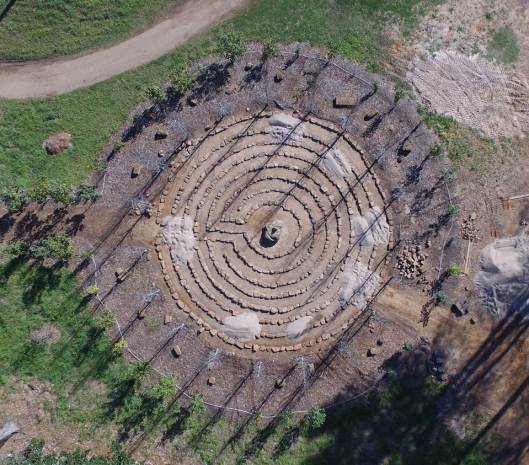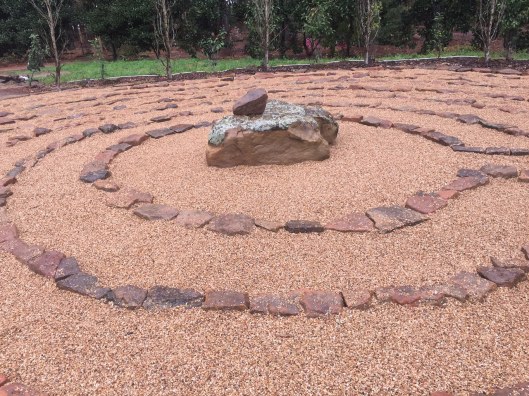Baluchistan in the 1980s was a different time. As an American, as a USAID consultant for the fruit industry, I was treated by my hosts in fine fashion. After all, the money was flowing into the country from various aid agencies. Pakistan was having to deal with hundreds of thousands of refugees from the Russian/Afghanistan war and the USA was helping the Pashtuns, the second largest ethnic group in Pakistan. They were Afghans. So, at the time, I was one of the good guys. My first encounter with a chaste tree in the wild was in a narrow dry mountain valley in this western province. The white to lavender blooms were dancing above the finely cut leaves of ten to fifteen foot shrubby trees that ran along the stream. This is the home of the chaste tree. For centuries farmers had captured the mountain run off of these streams into stone aqueducts that carried the flow out of the canyons down into valleys and then into small canals that split and split again to feed fruit orchards, vegetable farms and local villages. A system of waterways are the Karez irrigation system of the region and they serve as more than just an irrigation source. They tie farmers, villagers, and communities together in a long history of water rights, cooperation and wars. When we talk about water wars, this place wins. Along the run of the flow out of the mountains, the adjacent lands prospered. This is one of the natural homes of the Chaste tree.

Columbia Park, Shreveport, LA
Vitex agnus-castus is an ancient tree. It’s home is a wide swath across the Mediterranean. It enjoys many names including hemp tree, chaste tree, chasteberry, Abraham’s balm, and monk’s pepper. Vitex agnus-castus is a bit different from related Vitex species in that it can tolerate some winter freezing without dying. The tree was used in basketry. However, I cannot verify if its reputation as an anaphrodisiac is true. That means anti-libido. You might have seen it coming. Chaste tree? Monk’s pepper? At any rate, it is reported to have been used in men’s prison to keep the more festive males in check. There are reports sailors made good use of it during their long voyages on the sea. Just the name Monk’s pepper implies something; I’m not sure what. Anyway, the ground seed does look a lot like pepper and I can attest it tastes a little like pepper, but I never really wanted to overindulge. I can also testify that the rumor that Hillary Clinton was going to make it the state tree of New York is patently false. It’s just another darn example of that fake news problem.

Vitex agnus-castus can be cut back annually and will still rebloom
Long naturalized here and there, the species has been in cultivation in the South since 1670. The chaste tree is a butterfly attractant and sports showy blue, white, mauve, or pinkish blooms from May into September. This small tree can be left to reach 10 -15’ in height or whacked back to more desired proportions. If the spent blooms are cut away, the tree returns with another vigorous show of flowers. While exceptionally drought resistant, the chaste tree appreciates a good garden soil and moisture and vigorous plants mean longer and more dramatic inflorescences. In the north, the species can be effectively used as a perennial. Since it blooms on new growth it cannot be knocked out of a bloom show even when frozen close to the ground. Vitex is easy to root. While considered to be a cross-pollinating plant, single plants will self pollinate and make seed as well.
The variety ‘LeCompte’ is a nice form with long blue inflorescences and it came from the town of LeCompte, Louisiana. It was captured out of a home landscape by Greg Grant and a van load of SFA students. The story goes that the van screeched to a stop, the doors flew open, the cuttings were liberated, an escape was made good and the whole escapade took less than fifteen seconds. It may not be true but it does lend credence to the adage that if you have ten horticulturists in a room you’re looking at nine thieves.

LeCompte
There are many varieties. Salinas Pink and Flora Ann are introductions that showcase pinkish blooms with Flora Ann the pinkest in the trade. Both are Greg Grant introductions. These two provide a little different twist to the normal blues, lavenders and whites of most varieties in the trade.

Vitex agnus-castus ‘Flora Ann’ is a Greg Grant introduction and still the best pink
Other varieties include: Abbeville Blue – Deep blue flowers; Alba – White flowers; Blushing Spires – Soft pink flowers – a poor pink in our region; Fletcher Pink Lavender-pink flowers – not in our collection; Lilac Queen – Lavender flowers; broad spreading; 20 feet tall – not in our collection; Montrose Purple Rich – violet flowers; Rosea – very pale light pink; Sensation – lavender blue; Shoal Creek – Large blue-violet flowers on 12 to 18″ inflorescences; leaf spot resistance; Silver Spire – White flowers.
A current variety trial near the coliseum parking lot runs from North to South.itex agnus-castus has a long and interesting history. It’s a plant with a story. It’s tough, drought resistant and reliably flowers. It may have value if you’re locked in a prison cell and need to keep your mind properly focused. It attracts bees and butterflies. If you don’t like the way it’s acting, you can cut it all the way to the ground and it’ll return that spring and be flowering by summer. Texas A & M University named it a Texas Superstar and branded it with yet another name. It’s now promoted as the “Texas Lilac”, which I objected to simply because it’s not a darn lilac (Syringa species) and it’s not really a Texan. It just immigrated here. My protest went nowhere and I’m more convinced than ever that fake news is winning.














 Even though we’ve talked about a labyrinth for many years, it wasn’t until Eagle Scout Luke Stanley approached me about a project that this came together. Most Eagle Scout projects involve building picnic tables and boardwalks. When I mentioned this opportunity, Luke jumped at the chance. While funding was an issue, it finally all came together. The project received a boost near the end with Tim Howell’s donation of a Klingstone Paths treatment, a chemical that bonds all the pea gravel into a concrete hard surface, one that is permeable to rain. It breathes.
Even though we’ve talked about a labyrinth for many years, it wasn’t until Eagle Scout Luke Stanley approached me about a project that this came together. Most Eagle Scout projects involve building picnic tables and boardwalks. When I mentioned this opportunity, Luke jumped at the chance. While funding was an issue, it finally all came together. The project received a boost near the end with Tim Howell’s donation of a Klingstone Paths treatment, a chemical that bonds all the pea gravel into a concrete hard surface, one that is permeable to rain. It breathes.









